ww1 german battleships in a nutshell
In 1890, there was little concern for the German Navy, let alone for German battleships. There were only a few coastal vessels and old ironclads. However the situation changed dramatically in little more than 15 years, more than just raising eyebrows in the admiralty, let alone in the general public in UK.
In 1909 a “battleship scare” took the British Empire by storm, hammered by the press and even unsettling the house of commons. Germany became an industrial powerhouse with massive naval ambitions thanks to Wilhelm II’s strong will. The situation is now exactly the same in the pacific, between the new challenger, the Chinese PLAN and the USN.
In a short time, after series of homogenous pre-dreadnoughts, the Germans proved able to launch very soon their own dreadnought classes. Their launching rhythm was such that the classic Royal Navy Policy to be able to match the two best navies of the world at the same time, was put in jeopardy, quite suddenly and brutally. Therefore one PM coined his famous “we want eight and we won’t wait” destined to the Commons, a formula which became popular and benefited in turn the admiralty, trying the stay one step ahead of the Germans.
They succeeded, by cranking up three successive classes of 14-in armed dreadnoughts whereas the Germans were still launching ships with 12-in guns. And in the end, won the game in a sense by making the first super-dreadnoughts, the Queen Elisabeth class.
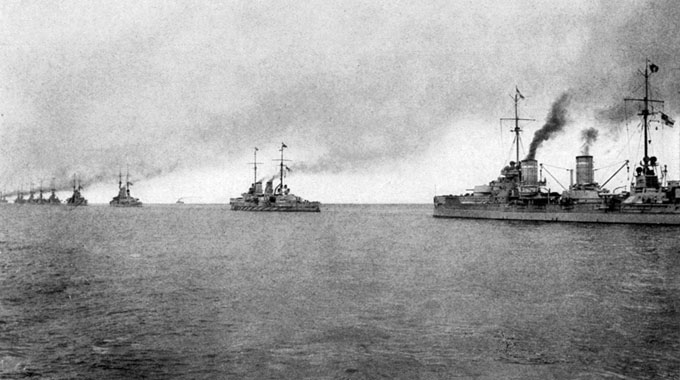
From Ironclads to Battleships 1870-1886
The origins of German WW1 battleships like in order fleets went back to the invention of the sea-going Ironclad in 1859. The Prussian Navy before Bismarck’s effort for unification and Franco-Prussian war counted screw corvettes and gunboats, but none was armoured.
Rhein class (1872)
By 1872 two armoured Monitors were built, the Rhein class, intended for the Rhein and to complete fortifications.
Wespe Class (1876)
In 1874, the German Empire ordered a serie of 11 armoured steamers. These 1139 tons ships were shalow draught gunboats, coastal vessels similar the British “Rendel Gunboats”.
They could be grounded on sandbanks to be used as fixed batteries. Armament was limited to a single 12-in (30.5 cm) gun in an open barbette, although surrounded by a 8-in thick breastwork, same on the belt. Poor seaboats, they were seldom used and rather kept in reserve, rearmed at some point but discarded in 1909 to 1911. Viper is known to have been used as a barge until the 1960s.
Brummer class (1884)
Another takeoff of the concept, lighter at 914 tonnes, they were able to reach 15 knots thanks to their compound 2000 shp steam engine, and carried a single 21 cm guns and 87, 37 mm QF guns plus TTs. Brummer and Bremse launched in 1884 had a 6.5 in (160 mm) bulkhead. good seaboat, at the end of their career, the first became a gunnery school ship then fishery protection vessel, weapons and machinery school ship, BU in 1922 and her sister was used as an oil barge, BU in 1910 and reused in civilian service for many more years.
Sailing ironclads: 1865-1875
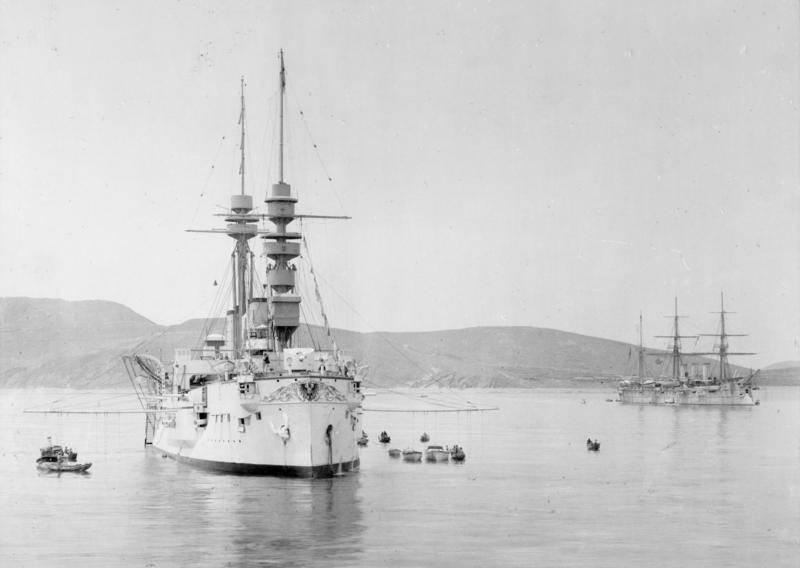
S.M. Deutschland in Port Arthur, circa 1900
From the Arminius to the Kaiser, the Prussian Navy and later the German Empire acquired or built a serie of 11 ironclads.
Prinz Adalbert (1865), Arminius (1865), Friedrich Karl (1865), Kronprinz (1866), König Wilhelm (1867), Hansa (1872), the first German central Battery Ironclad, Grosser Kurfürst class (1873), another of the kind, followed by SMS Kaiser class (1874). They used Krupp guns and armour of excellent quality which became a standard in 1900 (Krupp cemented armour in particular, “KC”, copied by the British notably for their Queen Elisabeth class). All these ships were no longer listed active in 1914, however SMS Kaiser became Uranus in 1904, served as a harbour ship, and was still used for this in 1920. They were of course not counted among ww1 German battleships
Late German steam Ironclad 1877-1884
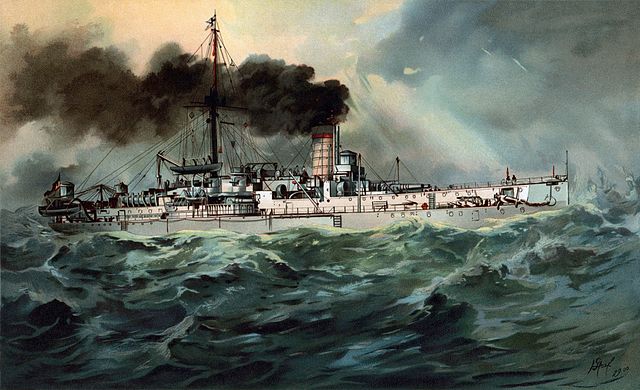
SMS Baden, lithography
Basically two classes of central citadel, called “armoured corvettes” and steam-only ironclads: The four of the Sachsen class and the single Oldenburg.
The Sachsen class (1877) were really the first modern steam-only barbette battleships. They were called central citadel ironclads, and their firepower resided in six 260 mm guns. This was not particularly impressive for ships displacing 7627 tonnes, even in 1877 when the first was launched. The same caliber was used on three previous classes however and was a reliable and efficient gun. Rate of fire was preferred over heavier rounds and longer range. The SMS Sachsen, Bayern, Würtemberg and Baden completed in 1878-1883, were discarded in 1910, to the exception of Würtemberg, BU in 1920 and Baden was still listed as a target ship in 1939. Both were in any case relegated to secondary duties and no longer listed in ww1 German battleships.
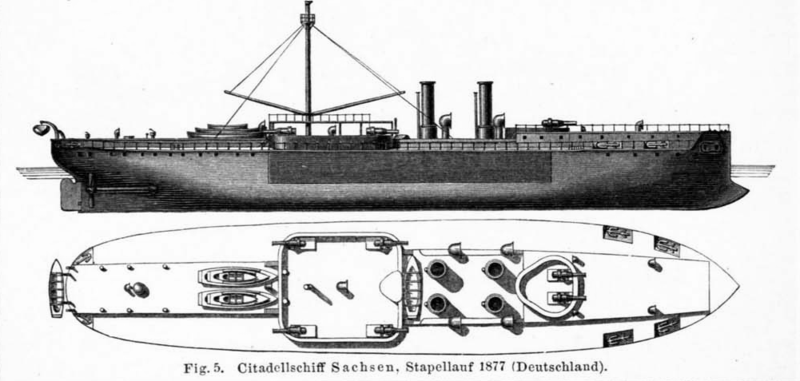
Oldenburg (1884): This small ship was a “cheap” equivalent to the Sachsen due to budget constraints, but at 5650 tonnes not considered a successful ship. She carried however a more varied armament, eight 21 cm and four 15 cm guns but only reached 13 knots, like the Sachsen, but with a lower range due to her limited size. The Germans called her the “flatiron” and she became a harbour defense ship in 1900, and from 1912, a target ship, BU in 1919.
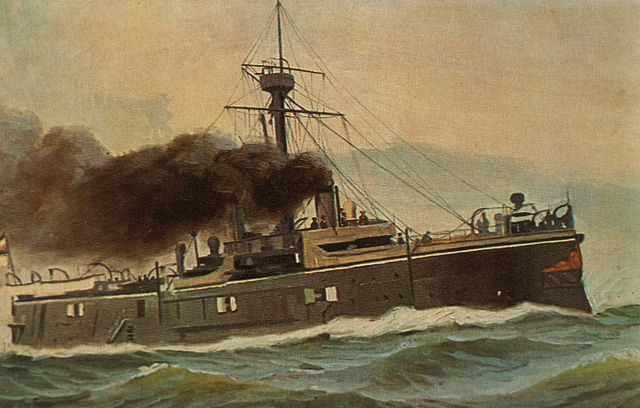
About admiral Reinhard Scheer (1863-1928)
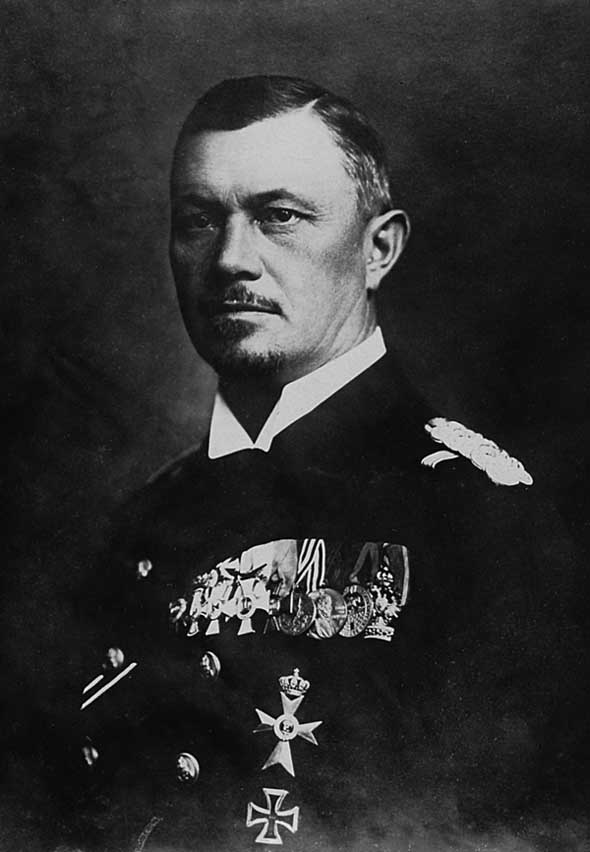
A point about Scheer and the Hochseeflotte (1916-1918)
Carl Friedrich Heinrich Reinhard Scheer was born in lower Saxony, from a middle-class background, contrasting with higher social status of most officers and cadets in the Kaiserliches Marine. He started his early naval career as a cadet in 1879 on the mixed frigate SMS Niobe. He served on several ships in the Pacific and later East Africa Squadron; In 1888 he became torpedo officer aboard the corvette SMS Sophie. In 1897 he was remarked and promoted by Alfred von Tirpitz to the torpedo section of the Reichsmarineamt (RMA). He quickly rose to active commands, Korvettenkapitän of the light cruiser SMS Gazelle, and later Kapitän zur See of the battleship SMS Elsass in 1907, then promoted in 1909 as chief of staff to the commanding officer of the High Seas Fleet, Admiral Holtzendorff. After being back to the RMA in the 1910s, he became squadron commander, II Battle Squadron of the High Seas Fleet in January 1913.
High sea fleet Commander
Vice Admiral Scheer became Commander in chief of the High Seas Fleet on 18 January 1916, replacing Pohl, gravely ill. He took the head of all Hochseeflotte units, from the varous German battleships wings to Hipper’s Battlecruisers, which became his subordonate. He wrote a Guidebook for North Sea tactical operations, outlining his strategic perceptions. His core concept was that the British Grand Fleet had to be pressured by U-boats and Zeppelin raids, combined with increased fleet sorties, and force to abandon the blockade, constrained to attack the German fleet. The Kaiser approved this on 23 February 1916. Scheer from then on, could take his ideas into practice.
After forbidding unrestricted submarine warfare in April 1916, Scheer gathered U-boats to support the fleet, stationing them off major British naval bases, waiting for a sortie. They would intercept British forces when trigerred by a bait, coastal shelling by the fast I Scouting Group battlecruisers (Hipper). Scheer would plan several operations of that kind. The Battle of Juland however proved his greater test so far.
Battle of Jutland: A failed test, or half victory ?
He had 16 dreadnoughts and six pre-dreadnoughts plus six scout cruisers and 31 torpedo boats at his disposal. This force departed the Jade (Wilhelsmhaven), at the foot of Denmark on the north sea, early on the morning of 31 May. It stayed in close communication with Hipper’s battlecruisers and light force in advanced. Room 40 having intercepted and decrypted this, the Grand Fleet departed in force the night before in order to cut off the Hochseeflotte and destroyer it for good.
The fight started south of Scheer’s battle fleet and eventually Vice Admiral David Beatty’s battlecruisers met the Hochseeglotte and turned back north to lure them towards the Grand Fleet (Jellicoe) being engaged in the meantime by Evan-Thomas Queen Elizabeth-class 5th Battle Squadron. In the evening, around 18:30, the Grand Fleet at last arrive for a sowdown, deployed to cross Scheer’s “T” from the northeast. Scheer understood the maneuver and made a turn to the south-west. At 18:55, he made another turn to attack the British fleet, with his famous ‘night cruising order.’ He took the initiative to avoid a night fighting and avoid to be cut off, but this manoeuver put Scheer’s fleet in a precarious position.
Nevertheless, Jellicoe turned his fleet south to try to cross Scheer’s “T.” again, followed, by a charge by Hipper’s mauled battlecruisers, which paid dearly. As darkness fell, Sheer ordered the fleet to adopt night cruising formation up to 23:40, followed by night fighting, then evading british destroyers and reach Horns Reef (pommern was lost in the meantime). His fleet reached the Jade at 13:00-14:45 on 1 June but maintained his forces ready in case Jellicoe would reach them.
After the Battle, Scheer wrote for the Kaiser an assessment, strongly urged for leaving the unrestricted submarine warfare campaign, only valid option to defeat Great Britain. He desperately tried to convince the naval command as well, and ultimately won. It resumed in February 1917, and of course the sinking of the Lusitania, in retrospect, perhaps cost Germany the war as the US entered the side of the entente. Scheer planned other used of the surface fleet, notably waiting for new mass-produce submarines he could use aside the Atlantic campaign for his own “traps”.
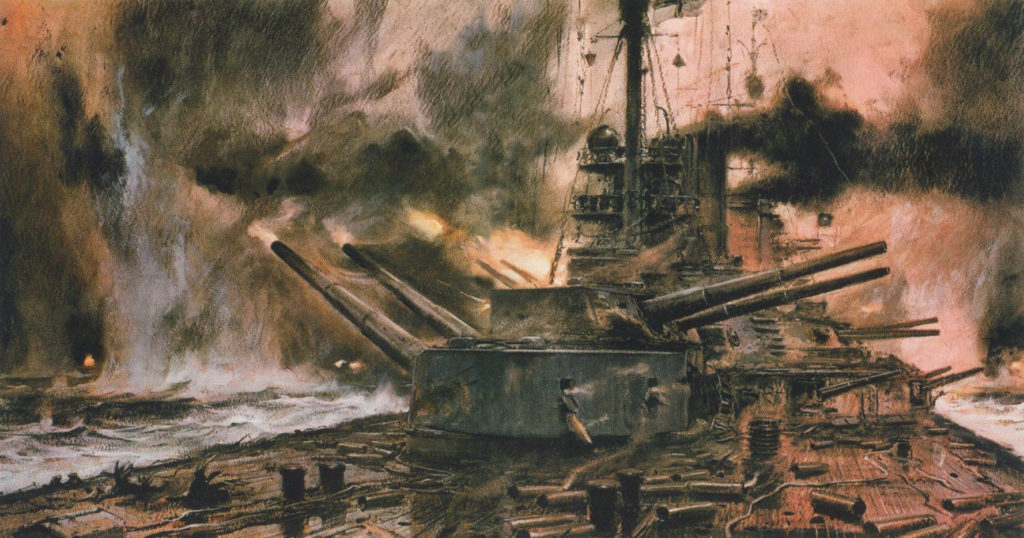
SMS Seydlitz at Jutland
August 1916 sortie
In 18–19 August 1916, he made another such baiting sortie, trying to destroy the remainder of Admiral Beatty’s battlecruiser squadron, bit not knowing about Room 40, he was rebuffed by th arrival of the Grand fleet once again, thanks to his new reconnaissance force. In late 1917, he sent light elements raid British convoys to Norway, triggering another sortie of the Grand fleet, where he could attempt to attempt to isolate and destroy some battleships, sending on 23 April 1918 the entire High Seas Fleet, but Hipper’s battlecruisers missed the convoy, doomed by a failure of German intelligence.
As Chief of staff: Advocating for submarine warfare
In June 1918, R. Scheer took place of Admiral Holtzendorff’s chief of the naval staff post, which resiged due to bad health in July. His position was confirmed on 11 August 1918 while Franz von Hipper took command of the High Seas Fleet. Both men knew and worked well together, like Luddendorff and Hindenburg. Scheer met the general staff and agreed the U-boat campaign was to be reinforced, and to built more. The Hochseeflotte’s shipbuilding plans were postponed and resources diverted to reach an additional 30 U-boats per month, by the third quarter of 1919, calling for 376 to 450 new U-boats total.
october 1918: The last operation
however due to the crews being restless after month of inactivity and growing discontent (with early bolshevik elements), Scheer intended to make the ultimate sortie, looking for a great clash whatever cost, in order to obtain a better bargaining position for Germany in peace negociations. It comprised two simultaneous attacks by light cruisers and destroyers, in Flanders and in the Thames estuary with the five battlecruisers here and dreadnoughts off Flanders. The plan soon was announced to the fleet, to the sailors outrage. Strikes erupted in most ships, and plans were modified to concentrate off the Dutch coast, but while the fleet was consolidating in Wilhelmshaven, war-weary sailors deserted some ships en masse.
Von der Tann and Derfflinger were the first impacted. On 24 October 1918, order was given to gather at Wilhelmshaven amongst new mutinies onboard all battleships, like the III Squadron. It went up to sabotage on Thüringen and Helgoland. Facing open rebellion, the whole operation was abandoned and squadrons dispersed. After Germany surrendered her fleet, the once proud and powerful Hochseeflotte was humiliated by being escorted to Scapa Flow for her internment. Scheer however was only distantly following the events, when the fleet scuttled. His wife and maid has been murdered and his daughter injured by an intruder into his house. He left the Navy a broken man, retreated into solitude, wrote his autobiography before being invited by his former adversary, Jellicoe, in 1928, but died at 65 in Marktredwitz, being given national funerals.
The development of ww1 German pre-dreadnoughts battleships in Germany
-Brandenburg (10,500 t, 16.5 knots, 6x 28cm)
-Kaiser (i) (11,000 t, 17.5 knots, 4x 24cm)
-Wittelsbach (11,700 t, 18 knots, 4x 24cm)
-Braunschweig (13,200 t, 18 knots, 4x 28cm)
-Deutschland (13,200 t, 18.5 knots, 4x 28cm)
SMS Oldenburg was already completed when another need of the admiralty was to be filled; Harbour defence, in a more efficient and dedicated way than older former ironclads. This was the serie of “Norse gods” planned in 1886 and ordered in 1888. In all, eight were built, launched 1889-1895. They displaced 3700 tonnes but were slow with little range, according to their role. Their main use was to test several innovations. Moreover, this was the first class made under the new ruler of German, decidedly pro-Navy Kaiser Wilhelm II.
The next step was an important one: The first modern pre-dreadnoughts of the German Imperial Navy. The Brandenburg class would comprise five vessels and displaced 10,500 tonnes, the largest German warships ever built at that stage. Upgrades consisted in larger guns, 40 cm more in caliber exactly (240 to 280 mm) with three twin turrets. They were launched in 1891-92, whereas the British contemporary Royal Sovereign class, which displaced 15,600 tonnes fully loaded (5,000 tonnes more), featured four 13.5 in guns (340 mm) and the class comprised eight ships, not five. Quite a few steps to equality for the ambitious new ruler of the young Empire…
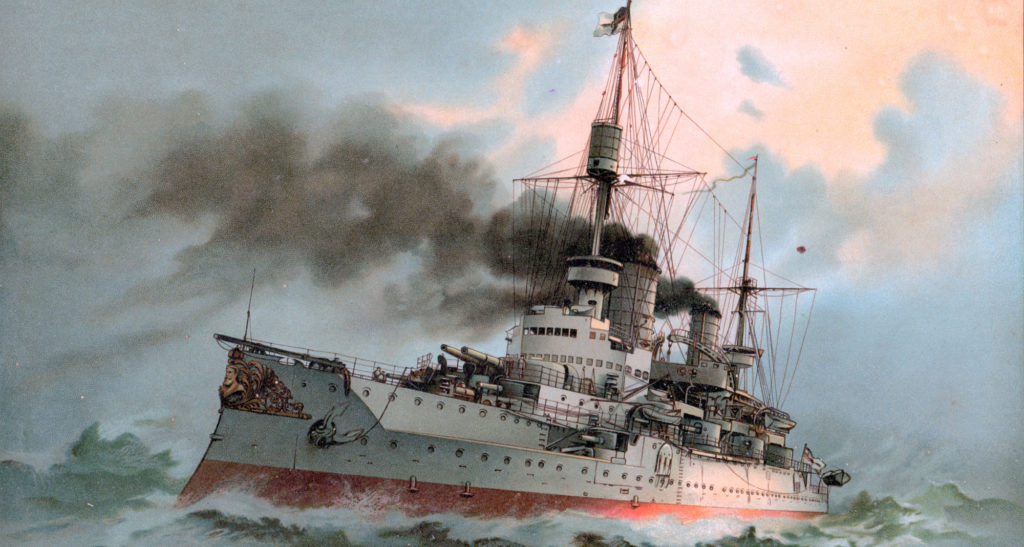
Lithography of Kaiser Friedrich III
Fortunately, engineers were hard at work and budgets were there to allow a new class to emerge, laid down from 1895: The “Kaiser” class. Heavier at 11,600 tonnes standard, these battleships were a bit faster, had less guns, and of a smaller caliber (24 cm), but a true, massive secondary artillery of eighteen 15 cm compared to six 10.5 cm guns on the previous Brandenburg class. This was still a far cry to British pre-dreadnought, but a path of methodical step-ups.
The next Wittelsbach class were just a step-up with still 24 cm main guns but the same secondary artillery and some improvements in armour. The following Braunschweig class however, were a real step-up in the right direction for the first time with the German trademark Krupp 28 cm guns. Speed remained about the same but they had a more impressive secondary artillery, fourteen 17 cm (6.7 in) SK L/40 guns in casemates. As usual, production was intense, with five ships each time. The next and last pre-dreadnought class was the Deutschland class. They still strongly resembled the previous class, had the same 28 cm main guns, but were more powerful, allowing them to reach 18.5 knots (34.3 km/h; 21.3 mph). Their secondary artillery was not even in turrets, but in casemates. The Germans actually never developed the intermediary, very fast “semi-dreadnoughts” with their secondary armament in turrets.
The race: German WW1 Dreadnought Battleships
Intelligence failure
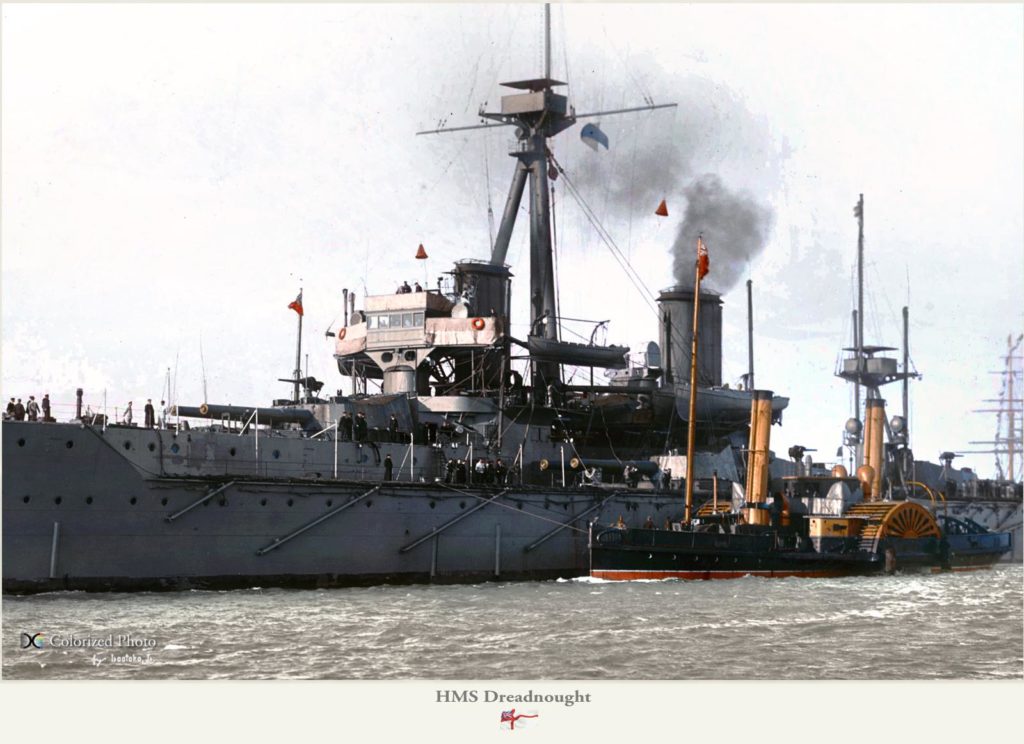
HMS Dreadnought, colorized by Irootoko Jr.
German naval spying in Great Britain by German agents started before WW1, concentrating on naval intelligence, the main focus or the general staff, since army intelligence was already well documented and has less edgy technological aspects.
Spying activity was never near as dangerous or intensive as the British generally thought. German navy intelligence organization was small, almost under-funded, and unknown due to her nature.
German spies were largely looking at the technical information about RN’s specific devices, possibly armour schemes collected directly in construction Yards but missed the British Ex‐expeditionary Forces entirely. In fact they produced few tangible results and were completely dumb-founded by the arrival of the HMS dreadnought.
Writings were on the wall, notably due to Cuniberti’s writings in the widely known Jane’s of 1903, but indeed Fisher’s correspondence was secret and his creation in January 1905 of a “Committee on Designs” too. These developments of monocaliber designs were kept secrecy both from the press, house of commons and Lords, and the bulk of the navy staff as well, at least until an agreement was found on a design that can be further developed (in that case the directorate of constructions was involved, and many engineers).
The last class of pre-dreadnought, the Deutschland class, were not intermediary vessels like were the British Nelson or Italian Regina Elena: They did not possessed a heavy secondary artillery. The Deustchland class were planned in 1901 and laid down from 1903, with five vessels, so construction was in full swing when the Dreadnought was launched. It would take one more year, in 1907, for laying down the keels of the first German dreadnoughts, the Nassau class. The design, to gain time, was just a scaling-up of the last German armoured cruiser, SMS Blücher and the next Helgoland, was a further scale-up with 305 mm guns.
Both ships shared exactly the same configuration of a single forward and aft turret, and four broadside turrets, two either side, on a continuous deck. The configuration was flexible and authorized six guns in chase and retreat, and eight in broadside. From there, German engineers will follow developments in UK, but with a general tendency to be always one stap too late, in artillery caliber in particular. The lineage of ww1 German dreadnought battleships was:
-Nassau (18,873 t, 20 knots, 12x 28cm guns)
-Helgoland (20,800 t, 20.5 knots, 12x 30.5cm guns)
-Kaiser (ii) (24,700 t, 21 knots, 10x 30.5cm guns)
-König (25,800 t, 21 knots, 10x 30.5cm guns)
-Bayern (wartime) (28,500 t, 21 knots, 8x 38cm guns)
-Sachsen (wartime, never completed) (29,500 t, 21 knots, 8x 38cm guns)
-L20 Alpha (project) (43,800 t, 26 knots, 8x 42cm guns)
German Battlecruisers
This chapter will be reduced, already a detailed post about them:
Design specifics
Germany was the second most avid user and builder of battlecruisers during the great war. No country but perhaps Japan went so far in this area, starting with the kaiser’s knowledge of the construction of HMS Invincible in UK by 1906. He immediately wanted to convert an armoured cruiser by then just laid down, SMS Blucher.
A best it was a compromise, armed only with 21 cm guns, but a monocaliber ship, closely modelled after Cuniberti ideas. Following in 1908 was launched the Von de Tann in 1909, armed with 38 cm main artillery and therefore considered the world’s first non-British battlecruiser.
She was followed by the improved Moltke class (with Goeben) in 1910-11, the SMS Seydlitz in 1912, and the Derfflinger class (1913), which third ship, and the Hindenburg (1915), last German battlecruisers to see action. The following Mackensen class (1917) and Ersatz Yorck were to follow, but shortages of materials and manpower bring their construction to a halt. The same tendency was observed as dreadnoughts: The British RN led the dance, and the Germans followed with a 2 years gap. However in general they were better armored than their British counterparts, and/or respected their safety regulations, but indeed, with a slower rate of fire, which explains the discrepancy of losses at the Battle of Jutland in May 1916.
German battlecruisers in action
Grman battlecruisers used to shell British coastal cities in 1914. They did several raids, each time with the same objective: Provoke the Royal Navy, and act as a bait to drag them to pre-positioned submarines and minefields, with the Hochseeflotte at Wilhelshaven ready to pounce on the diminished grand fleet. At least that was the plan in Scheer’s mind. Hipper was the bait, like Beatty for the Royal Navy.
At Jutland, German battlecruisers showed their relative superiority, despite often smaller guns. They were more accurate, (the configuration of lighting also played a role), more resilient, and their shells did not failed to detonate as often as for the British. SMS Von der Tann came to shine as in first 15 minutes of the duel she sank the battleship HMS Indefatigable. She was hit four times by Queen Elisabeth dreadnoughts, heavy 15-in caliber shells, which disabling her two aft turrets, generated electrical failures dooming her main artillery, leaving her for fifteen minutes with only its secondary battery.
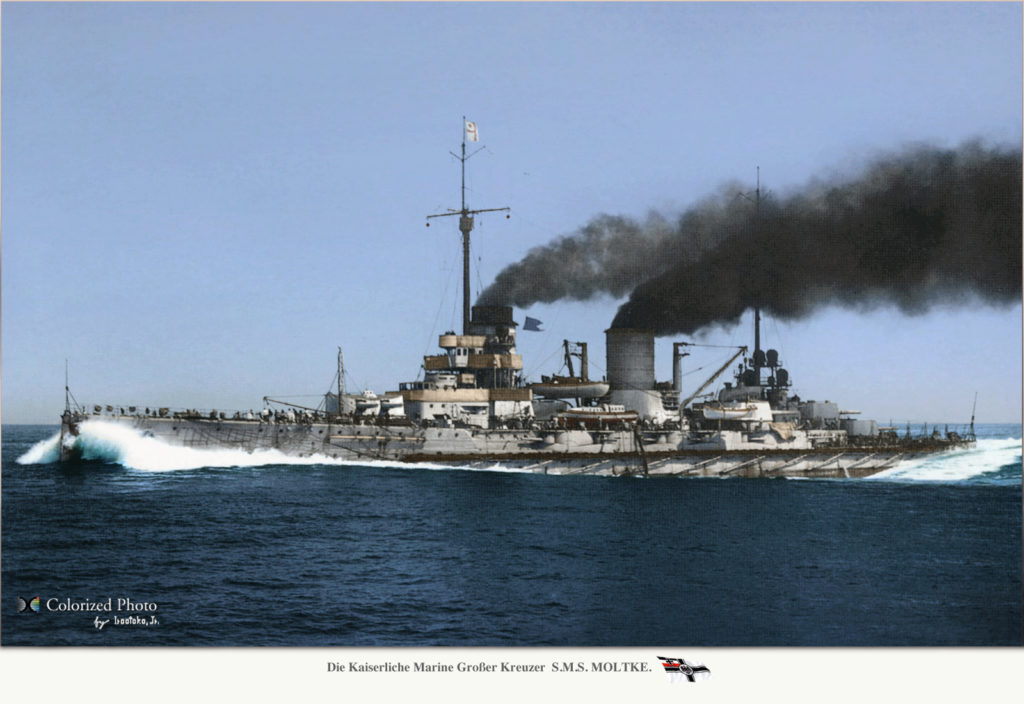
SMS Molkte, colorized by irootoko jr.
SMS Moltke, a veteran of the Dogger bank in August 1914, was torpedoed E3 submersible but survived. She was hit 6 time by HMS Tiger at Jutland, but damage was controlled. In 1918, stranded at sea by a serious turbine accident she was torpedoed by E42, but again, she survived showing her extraordinary resilience.
SMS Goeben was the flagship of the Mediterranean squadron in 1914 and became overnight the admiral ship of the Turkish Ottoman Navy as Yavuz Sultan Selim. She would encounter Russian capital shps of the black sea all along the war, and showed also her resilience, being hit many times, especially in 1918 at the battle of the Aegean.
SMS Seydlitz also shined at the Battle of Dogger Bank against HMS Lion, Beatty’s admiral ship, taking three hits. Repaired, she hit a mine in 1916 and again was repaired. At Jutland, she took two torpedoes from the destroyers HMS Petard and Turbulent and 22 hits, including sixteen heavy shells (15-in). Amazingly she survived all this, limping back to the German coast to be beached, filled with 5330 tons of seawater.
SMS Derfflinger She fought at the Dogger Bank, taking three hits, but at Jutland she pounded HMS Queen Mary (11 hits) while taking herself 21 hits (notably 15-in shells by HLS Revenge), loosing her two rear turrets and filling with 3300 tons of seawater. She remained stable due to her ballast, with a 2° bank and managed to return in Kiel.
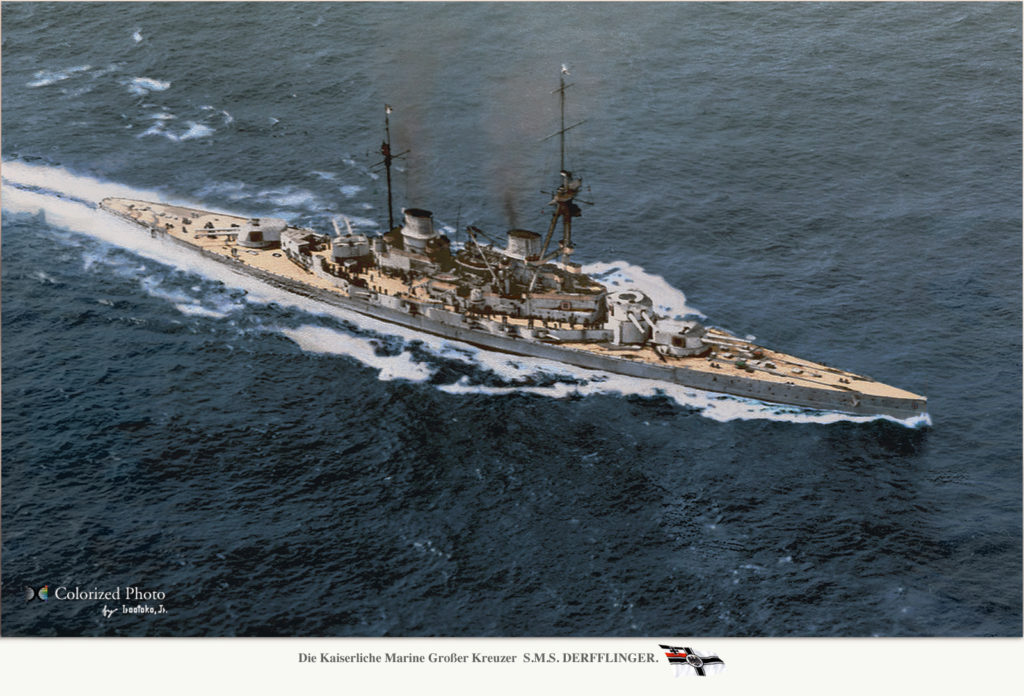
SMS Derrflinger colorized by Irootoko Jr.
SMS Lützow was operational only two months before Jutland. She sank HMS Invincible, taking only two hits, and almost sank HMS Defence as well. When the battle line concentrated on her, she took 24 heavy caliber rounds and was stranded, finished off by the destroyer G38 as she was “unsinkable”. This victory by the RN was not as bright as she was scuttled, not sank by gunfire. In other conditions, towed to the coast, she could have survived, again another superb showcase of amazing resilience of German battlecruisers. However armour-wise, it seems the difference was not that considerable.
Last wartime German battlecruiser, SMS Hindenburg started trials in May 1917 and therefore only knew a rather dull period for the Hochseeflotte. She was nevr really tested, making a few raids in the Baltic but remained mostly inactive until the surrender. In 1930 an official Royal commission of Engineers made a comprehensive study of her before she was broken up. Her protection, ammunition management and communication, fire control system were carefully studied.
German Battleship construction & projects of WW1
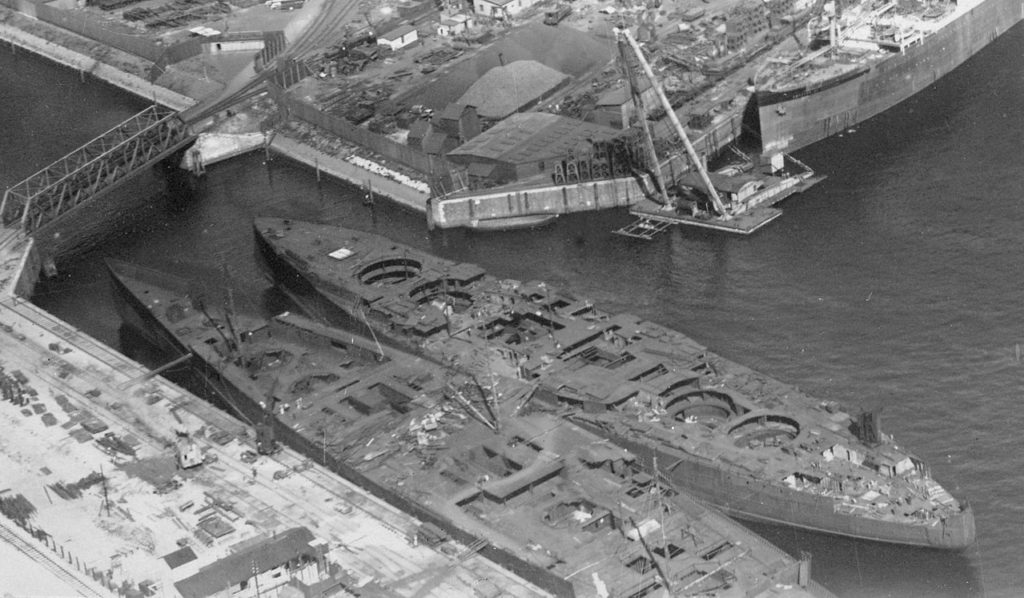
Hamburg, 1920, unfinished hulks: Mackensen-class battlecruiser “Prinz Eitel Friedrich” (larger of the two) and Bayern-class battleship “Württemberg” (smaller of the two). War Department. Army Air Forces. 6/20/1941-9/26/1947 (NARA).
During wartime, lack of materials and labour shortages slowed down construction, but three new class of ships were laid down. The Bayern and Baden, last German battleships were completed in July 1916 and March 1917. The next two sister-ships, called Sachsen and Württemberg were built respectively at Germaniawerft, Kiel and AG Vulkan in Hamburg. They were launched on 21 November 1916 and 20 June 1917 respectively, but never completed, cancelled to provide extra manpower and resources to the army. They were about 10-12 month away from completion.
It is unclear as much they differed from the Bayern class. R. Gardiner (Conways) seems to separate them entirely (see later).
This was not the last class of ww1 German battleships however. German planners already envisioned the next step of British battleships, and it seemed obvious that the 15-in caliber was just transitional. Fisher’s light battlecruisers planned for the Baltic landing operation were indeed fitted with 18-in guns (457 mm). This led the German admiralty to desire, just like Fisher with the Queen Elisabeth, a mix between a battlecruiser (with the speed attached to it) and a battleship and its level of protection.
But they pushed the envelope far enough to not making any compromise as shown by the Queen Elisabeth class: They were ready to try a much, much larger displacement, from 30,000 to 43,000 tonnes, to house a massive powerplant. Their development spanned a year and a half, in 1916-to the fall of 1917. However, contrary to the Mackensen class, they were never laid down and cancelled. These were to be the last ww1 German battleships, but their plans were not forgotten. Both plans for the Sachsen and this prospective class were reused on the 1939 Bismarck class.
Sachsen class (1917)

These ships were slightly lengthened Bayerns, Sachsen being built under
the 1914-15 programme and Württemberg under War Estimates, and would have been similar in appearance except for higher funnels in Sachsen.
The designed armament unchanged except that the 38cm mountings were Drh C/1914 with 20° elevation, and TT would certainly have been reduced to 3. Armour was also as in Bayern with a few exceptions. Sachsen had a structure protecting the top of the diesel engine for about halfway between armour and main decks. This was 8in-5.5in with 3.2in roof, and both ships are shown with all barbettes 1.6in behind the 14in belt, and with the armour deck 2in over some areas amidships.
In Sachsen the centre shaft was to be diesel-powered and the two outer steam with 3 oil- and 6 coal-fired boilers and 2 sets of turbines in 4 engine rooms, while in Württemberg there were 3 oil- and 9 coal-fired boilers with 3 sets of turbines in 6 engine rooms. Range was to be 2000nm at 12kts on diesel alone.
Specifications
Displacement: 28,345/28,247 tonnes standard, 31,987/31,700 tonnes
Dimensions: 182.4 x 20 x 9.4m (598 fr 5in oa, 98ft 9in, 27ft 8in)
Propulsion: 2 shafts Parsons turbines, 12 Schulz-Thornycroft boilers, 48,000 hp. 22 knots.
Armour:
Belt 120-350 mm (4.7 in – 14 in)
Bulkheads 140 – 300 mm (5.5 in – 12 in)
Battery 170 mm (6.7 in), Barbettes 40-350 mm (1.6 – 14 in)
Turrets 100-350 mm (4 in – 14 in), CT 170 – 350 mm (6.7 in – 14 in)
Armament: 8 x 38 cm, 16 x 15 cm, 8 x 8,8cm FLAK, 5 x 60 cm TTs sub
L20 Alpha class (1919)
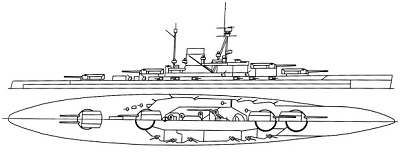
Rendition of the L20 alpha concept, as recovered from the archive sketches. I’ll do a HD version in 2024 with a dedicated post.
This design, dated 2 October 1917, was selected from a number of fast battleship and battlecruiser designs for construction on 11 September 1918, though by this time there was no chance of them ever being built.
Outlines show a single truncated funnel with tripod foremast and a forecastle extending to the after superfiring barbette.
The turrets were arranged with superfiring pairs fore and aft, the latter being widely separated by engine rooms. The 15cm were in an upper deck battery. There was a single bow TT and one on either beam abaft the boiler rooms and thus within the torpedo bulkhead, though these would probably have been moved to an above water position behind the forward side armour.
The 14in belt armour extended from a little forward of the fore barbette to a little abaft the after one, and from 77in above lwl to 14in below. It tapered to 6.7in at the lower edge 67in below the waterline, and was 10in between the main and upper decks.
Forward the armour was 10in with 6in lower edge not extending to the stem, and aft 12in with Sin lower edge. Barbettes are shown as 14in reduced to 10Oin behind the battery, 10in-6in behind the 10in side and 6in-4in behind the 14in. Turrets had 14in faces, 10in sides, 12in rears and 10in-6in roofs.
The armour deck was 2.4in-2in amidships, 2in forward and 4.7in-2in aft, with a 1.6in-0.8in forecastle deck over the battery, apparently 0.8in on most of the upper deck and on the main deck aft. The torpedo bulkhead was 2.4in-2in
continued as a 1.2in splinter bulkhead to the upper deck.
There were to be 6 oil-fired 156 coal-fired boilers but it is not clear whether there were 2 or 4 sets of turbines. They would obviously have been very powerful ships but the decks were thin as was the belt lower edge, and armour of 10in or less would have been vulnerable to later 15in shells.
Specifications
Displacement: 28,345/28,247 tonnes standard, 31,987/31,700 tonnes
Dimensions: 238 x 33.5 x 9-9.9 m (781 ft x 110 ft x 32ft 6in)
Propulsion: 4 shafts turbines, 12 Schulz-Thornycroft boilers, 100,000 hp. 26 knots, coal/oil: 2950/1970 tons
Armour:
Belt 130-350 mm (5 in – 14 in)
Bulkheads 60 – 250 mm (2.4 in – 10 in)
Battery 170 mm (6.7 in), Barbettes 100-350 mm (4 in – 14 in)
Turrets 150-350 mm (5 in – 14 in), CT 150 – 350 mm (6 in – 14 in)
Armament: 8 x 42 cm (16.5 in), 12 x 15 cm (6 in), 8 x 8,8 cm FLAK (3.4 in), 3 x 60/70 cm (28 in) TTs sub
Read More/Src
R. Gardiner, Conway’s all the world’s fighting ship 1860-1905, 1906-1921
//www.fr.naval-encyclopedia.com/1ere-guerre-mondiale/Kaiserliche-Marine.php#cuirasses
//en.wikipedia.org/wiki/List_of_battleships_of_Germany
//en.wikipedia.org/wiki/Anglo-German_naval_arms_race
//www.bbc.com/news/magazine-27641717
//winstonchurchill.org/publications/finest-hour/finest-hour-177/winston-churchill-new-navalism-2/
Seligmann, Matthew (January 2010) – “Intelligence information and the 1909 naval scare: the secret foundations of a public panic”
//en.wikipedia.org/wiki/L_20e_%CE%B1-class_battleship
Spies of the Kaiser: German Covert Operations in Great Britain
Dreadnought: Britain, Germany and the Coming of the Great War – By Robert K. Massie
German Battleships 1890-1917
The first date is about coastal battleships of the “Norse” serie, and late date for ships uncompleted like the Sachsen class and projects cancelled at the end of the war, such as the L20 alpha class (project of October 1917, ordered 11 September 1918). We don’t have any knowledge of further paper projects in 1918. On the ancient side, the oldest post-German unification (1870), so non-Prussian battleships were discarded and were used in menial roles in WW1 (see above).
Siegfried (1889)
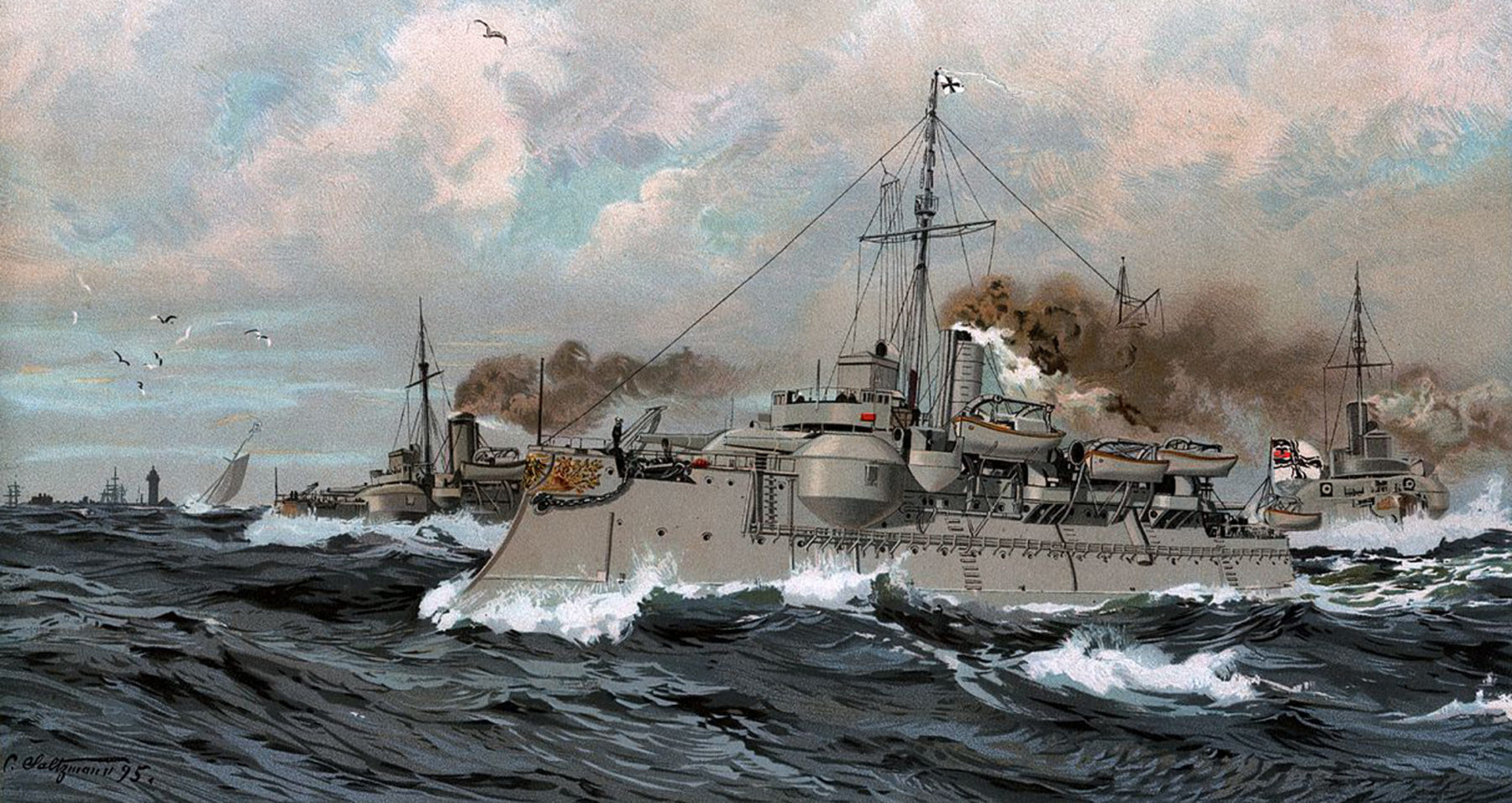
Symptoms of the philosophy of the German navy before the arrival on the throne of Wilhelm the second and his grand ambitions, these first eight battleships were coastal units, having no other vocation than the defense of the major German ports of the Baltic.
Their dimensions allowed only a modest armament, and they were comparable to the coastal battleships and monitors developed by the Scandinavian navies at the time. Their configuration was singular, with three single turret x which both were forward in either side, making a triangular configuration. These ships were all named after old Norse mythologic figures.
Odin and Aegir, the last two units, differed from the others by armament (10 x 88 mm, 4 x 450 mm torpedo tubes), the armor, the two funnels, the military masts. The series included besides these two ships, Siegfried, Beowulf, Frithjof, Heimdall, Hildebrand, Hagen, laid down in 1888-1893 and accepted in 1890-96.
All these ships, were rebuilt in 1900-1904. Two 88 mm AA guns were added, they were lengthened to 86.5 m, re-equipped with new boilers giving them two funnels, the tonnage jumped to 4,158 tons. In 1914, these eight ageing ships made the VI th Wing of Rear-Admiral Eckermann, Hochseeflotte.
In 1915 they were retrograded as local coastguards until 1916 when they were disarmed (their guns were transferred to the front). They were sold in 1919. Although four were broken in 1919-1921 (the Hildebrand ran aground on a Dutch sandbar during her transfer), SMS Beowulf briefly served as an ice-breaker, while Frithjof, Odin and Aegir were converted into cargo ships and survived until 1929-35 in this improbable guise until new ships replaced them in this desperate role.
Specifications
Displacement: 4158 t
Dimensions: 88.5 x 14.9 x 5.8m
Propulsion: 2 propellers, 2 VTE engines, 6 boilers, 6000 hp. and 14.5 knots max.
Shielding: Crew Turrets 203, belt 230, blockhouse 230, barbettes 203 mm;
Crew: 280
Armament: 3 guns 240, 10 of 88, 4 TLT 450 mm (SM, 1 av, 1 ar, 2 sides)
Kaiser class (1896-99)

This class of 5 battleships (the “emperors”) included the Friedrich III, Wilhelm II, Wilhelm der Grosse, Karl der Grosse and Barbarossa. Very different from SMS Brandenburg in all respects, they would form the basis of the other three classes of pre-dreadnoughts following. The first was approved in 1894 and put on hold in 1895, 1896 for the Wilhelm II, 1896, 98 for the others.
They were launched in 1896-1900 and completed in 1898-1902. Their main artillery was two turrets (still 280 mm against 305 in the Royal Navy), but had an impressive secondary artillery with no less than 18 pieces of 150 mm divided into 6 simple turrets and the rest in barbettes. They were quite tall and suffered from a lack of stability, and were thus rebuilt in 1907-1910. We lowered their superstructures, their funnels, lightened their military masts, we removed 4 pieces of 150 mm in barbettes to replace them by 4 pieces of 88 mm, which were all also placed on the superstructure, just as we deposited the TLT of stern.
The Wilhelm II was until 1906 the flagship of the Hochseeflotte at Kiel, but in 1914, these ships were in second line. In 1916, without having really fought, they were disarmed for use as utility pontoons. Too slow and with insufficient artillery, they were no longer compatible with the German line fleet at that time, especially after Jutland.
Specifications
Displacement: 11,600 t
Dimensions: 125.3 x 20.4 x 8.25 m
Propulsion: 3 shafts TE machines, 12 boilers, 14,000 hp. and 17 knots max.
Armour protection: Ammunition well 254, belt 305, bridges 65, barbettes 305 mm;
Crew: 651
Armament: 4 x 280 (2×2), 18 of 150, 12 of 88 mm, 6 TLT 450 mm.
Wittelsbach class (1900-01)
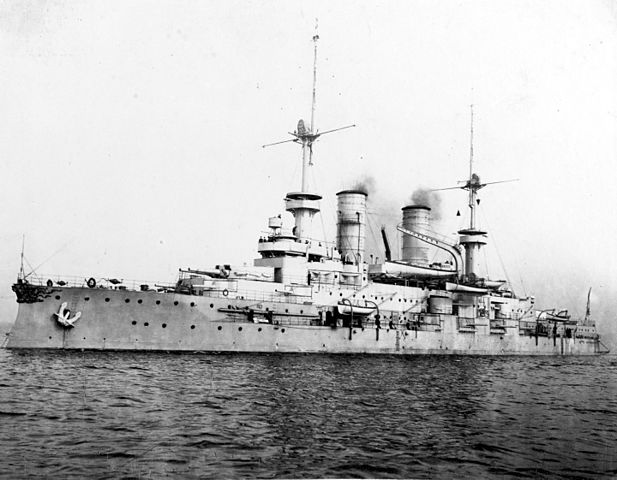
This class of 5 battleships (first series of “regions”) included the Wittelsbach, Wettin, Zähringen, Schwaben, and Mecklemburg. They had been ordered in the law of 1898 instituted by Von Tirpitz then Minister of the Navy. They were quite close to the previous Kaiser, but some of their secondary turret artillery had been replaced in barbettes. Kaiser’s design lessons in terms of superstructure height and stability were also digested. The hull was more than a continuous bridge. As for the Kaiser, the front turret was resting on a battery bridge, overlooking the front deck.
Another change was the belt that was reinforced. The speed was slightly more than half a knot. They were also heavier and much wider. Until 1916 they were kept in reserve at the seine of the 4th squadron of line, which made no exit. Judged too vulnerable, they were not engaged. In 1916 they were reassigned to subsidiary roles: The Mecklenburg became a floating prison, the others served as a training ship.
In 1919, the Wittlesbach (and the Braunschweig-class Lothringen) were converted into minesweeper speedboats, carrying 10 F-type units on their restored bridge. The experiment ended in 1921. It was struck down and BU. The others shared this spell except the Zähringen which was converted in 1926 into a radio-controlled target. He served in this role until December 1944: Anchored in Gdynia, he was bombed by the RAF and completed by the Germans.
Specifications
Displacement: 12,600 t
Dimensions: 126.8 x 22.8 x 8 m
Propulsion: 3 shaft TE machines, 12 boilers, 15,000 hp. and 17.5 knots max.
Armour protection: Ammunition well 254, belt 305, bridges 65, barbettes 305 mm
Crew: 683.
Armament: 4 x 280 (2×2), 18 of 150, 12 of 88 mm, 6 TLT 450 mm.
Braunschweig class (1902-04)
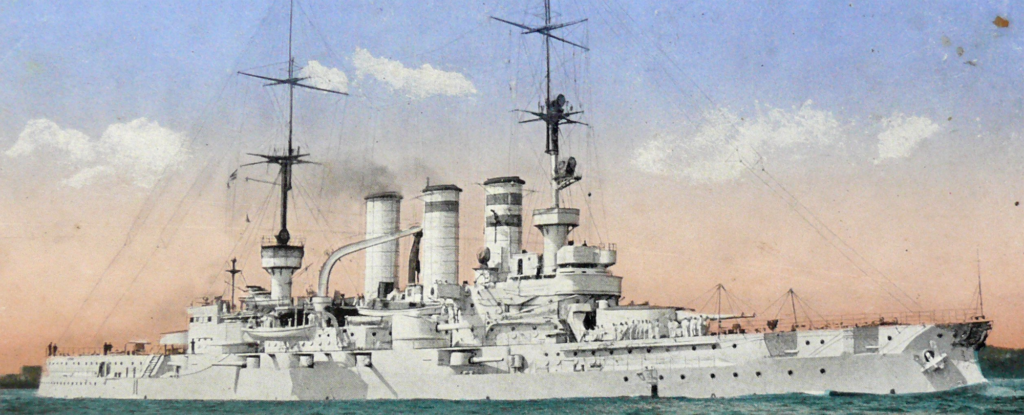
This class of 5 battleships (second set of “regions”) included the Braunschweig, Elsass, Hessen, Preussen, and Lothringen. They were started in 1901-1902 in Schichau, Germaniawerft and Vulcan. They derived closely from the previous Wittlesbachs, but their secondary artillery, partly in barbettes and partly in simple turrets, was changed to 170 mm caliber, which was unique at the time, and included some of the weakness of the 280 mm in range and to penetrating power lower than British 12 inches.
They had a new boiler system, with power and speed increasing, and three compartments and funnels. They reached 25.6 meters wide, and in fact remained fairly stable. Their front turret was returned to normal position. By far the heaviest German pre-dreadnoughts, they remained relatively inactive at the beginning of the war. They formed the 4th squadron based in the Baltic and intended for the possible Russian fleet raids.
Due to the lack of crews, they were partially in reserve soon in the war, and officially ranked as coastguard. In 1916, their secondary battery was removed and they kept only a few 88 mm guns. In 1919, Preussen and Lothringen were converted into type-F torpedo boats carriers. The experiment was interrupted in 1938, and the Preussen was BU, as were the other units of the class in 1931. Hessen, on the other hand, became a radio-controlled target ship, survived the Second World War and was awarded as war prize to the USSR in 1946, renamed Tsel and BU quickly.
Specifications
Displacement: 14,200 t
Dimensions: 127.7 x 25.6 x 8.1 m
Propulsion: 3 shafts TE, 16 boilers, 17,000 hp. and 18.5 knots max.
Armour protection: Ammunition well 254, belt 305, bridges 65, barbettes 305 mm
Crew: 743.
Armament: 4 x 280 (2×2), 14 x 170, 12 x 88 mm, 4 ML, 6 x 450 mm TTs sub.
Deutschland class (1904-06)
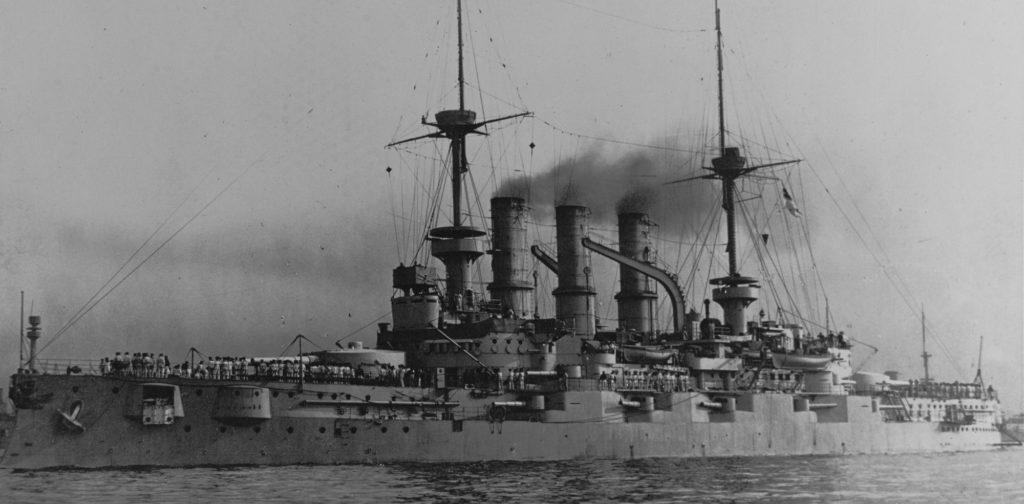
The five pre-dreadnought of the Deutschland class were the last of this type built in Germany. They were ordered in 1903-1905, even though the HMS Dreadnought was under construction (whic was unknown at the time). They were completed and accepted for service in 1906-08, when the first Dreadnoughts appeared. In fact, they were virtually useless in 1910.
But Tirpitz evaded these criticisms by arguing that the future German battleships would require a redevelopment of the Kiel Canal, long and particularly expensive work. They relied heavily on the design of the previous Braunschweig, but they were a little smaller, with rearranged funnels, higher power but unchanged speed, and secondary artillery entirely back in barbettes.
In the same way, their tertiary artillery went from eighteen to twenty 88 mm guns. Deck armor was slightly lighter, but turrets, barbettes and shields saw their protection increased. Still “fresh” in 1914, they were kept in the front line of the 2nd Wing of the Hochseeflotte. In May 1916, during the Battle of Jutland, they had the opportunity to fight.
SMS Pommern barely had time to fire a few volleys before being literally destroyed by the explosion of a torpedo in an ammunition bay, launched by British destroyers of the 12th squadron. She sank with all hands, one of the rare pre-dreadnought to see action and be lost in combat during this war. Until 1917 they remained inactive, removed from the Hochseeflotte, their crews needed elsewhere, and outside Deutschland scrapped in 1920, they formed the heart of the naval force of the interwar Weimar’s Reichsmarine. They were converted as training ships and partially rebuilt. Schleswig-Holstein in fact opened WW2 by firing the first shots of the war in Poland at the Westerplatte.
Specifications
Displacement: 14,000 t; 127.6 x 22.2 x 8.2 m
Propulsion: 3 shafts VTE engines, 16 boilers, 19,000 hp. 18.5 knots max.
Armour protection: Well ammunition 230, belt 305, bridges 50, barbettes 305 mm
Crew: 743.
Armament: 4 x 280 (2×2), 14 x 170, 20 x 88 mm, 4 MGs, 6 x 450 mm TTs.
Nassau class (1908)

The four Nassau (Nassau, Westfalen, Rheinland, Posen) were the first German monocaliber battleships. They arrived long after the completion of HMS Dreadnought, and had a configuration of 6 turrets, including 4 central, still equipped with 28 cm guns. This gave them 12 guns of this caliber, to compare with the ten of the Dreadnought, but eight in broadside.
For secondary armament (absent on the Dreadnought and his successors on the British side) thse dreadnoughts had a battery of 150 mm guns, more “standard” than the 17 cm, and faster, all in barbettes. There was also the light battery of 88 mm guns, ten being in barbettes and the others on the battery roof, plus 6 submarine torpedo tubes.
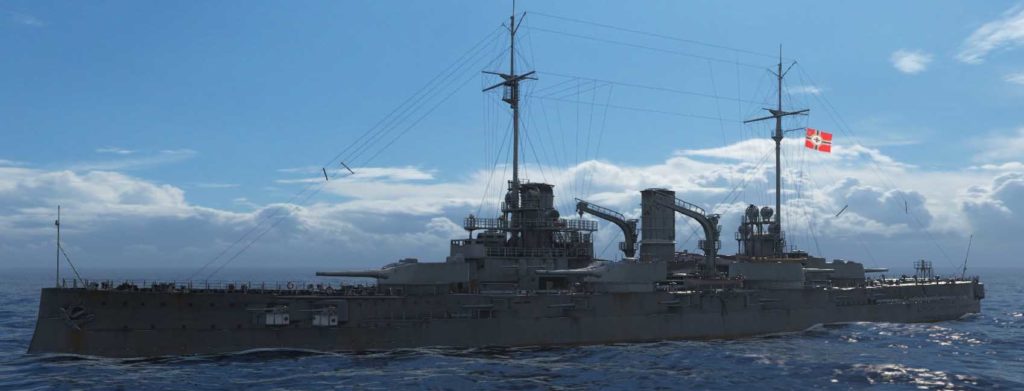
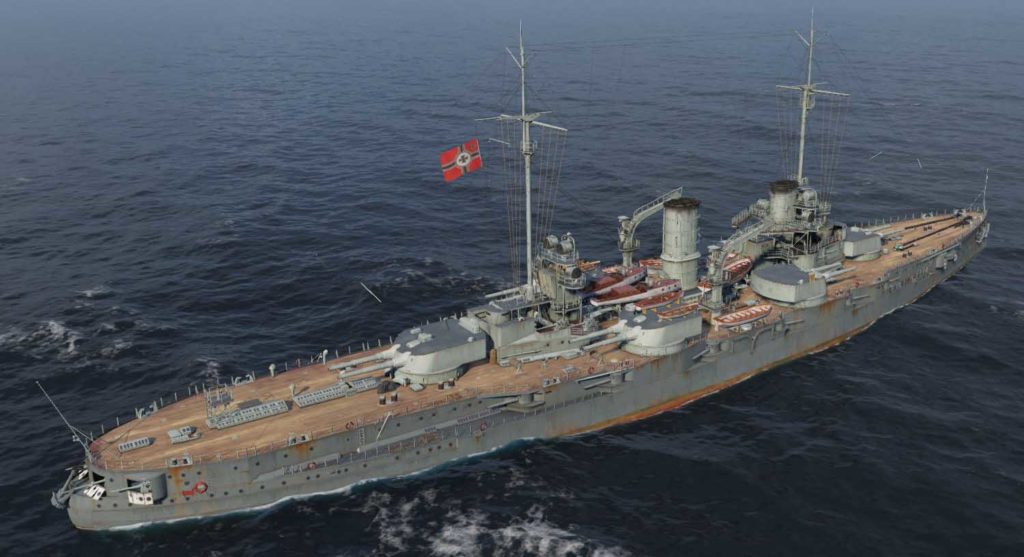
WoW’s renditions of the SMS Nassau class
Large, these ships were very stable, with a roll so limited that fire was accurate and faster. Good walkers, by forcing their boilers to 26-28,000 hp, they reached more than 20 knots. Their completion and fitting-out was long and the last two were not accepted until September 1910. Their active service was uneventful. In August 1916, the Westfalen was torpedoed by E23. She made water from the stern, filling with 800 tons of seawater, but returned safely.
SMS Rheinland for her part, hit a reef off Lagskär (Norway) in April 1918, taking 6000 tons of seawater. Immobilized, engineers teams had to remove part of her armor and all her guns on the spot to recover her, pumping water into the hull. She was towed back to to Kiel but never repaired. Unlike the other modern battleships of the Hochseeflotte, none of these 1st gen. german battleships were driven to Scapa Flow: They were BU on site in 1920-24.
Specifications
Displacement: 18,750 t – 21,000 t PC; 146 x 27 x 9 m
Propulsion: 3 shafts VTE machines, 3 cyl., 12 Schulz-Thornycroft boilers, 22,000 hp. 19.5 knots max.
Armour protection: Belt 300, Battery 160, Internal Formwork 210, Turrets 280, Blockhaus 300, 280 mm barbettes
Crew: 1140.
Armament: 12 x 280 (6×2), 12 of 150, 16 of 88 mm, 6 TLT 450 mm.
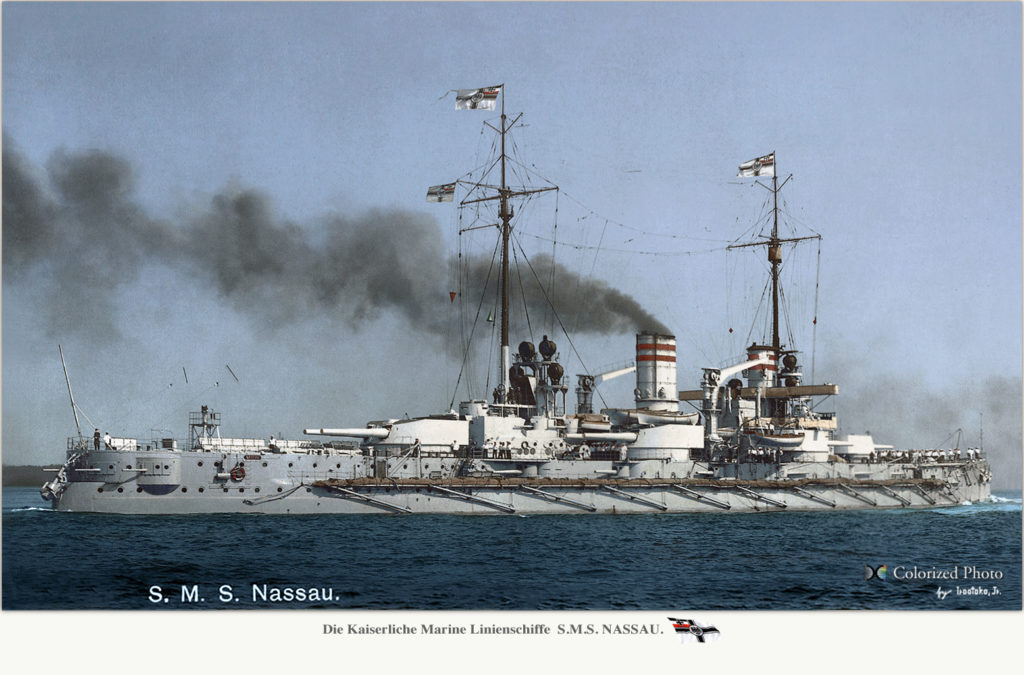
Nassau class ships colorized by Irootoko Jr.
Helgoland (1909)
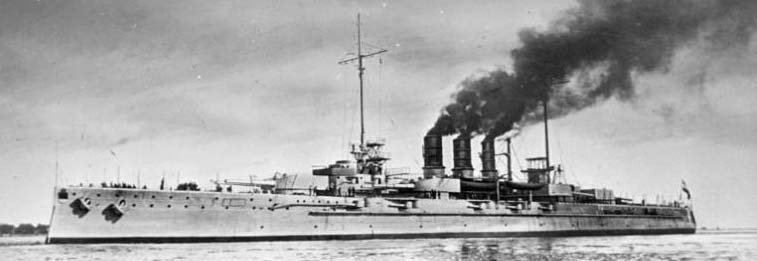
These four battleships (Helgoland, Ostfriesland, Thüringen, Oldenburg) marked a quick advance in design for German battleships. Apart from the artillery provision, they remained influenced by the Nassau class, their main innovation being to move to the “standard” caliber used by other nations, the 12-in caliber or 30,5 cm in German ordnance. However, when these ships were completed in 1911 (1912 for the Oldenburg), UK already swapped to 14-in or 343 mm.
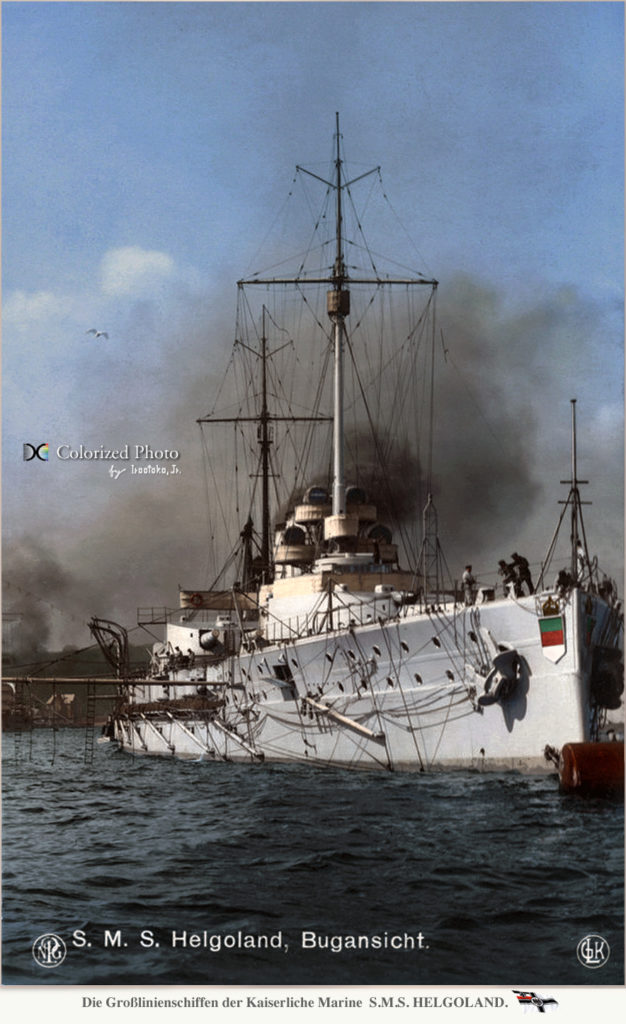
SMS Helgoland, prow, colorized by Irootoko Jr.
Much larger than the Nassau, their three close funnels which distinguished them from Nassau, their secondary armament was reinforced with 2 guns, to the detriment of their tertiary artillery, and the caliber of torpedo tubes was increased to 500 mm. They were also faster, and reached 21.3 knots on sea trials (Oldenburg).
Their armor was also singularly reinforced, true to the German principle that protection was the paramount factor. These German battleships formed a squadron, the 1st, commanded by Vice Admiral Von Lanz, with the four units of the Nassau class. They participated in the Battle of Skaggerak (Jutland for the Anglo-Saxon world).
On June 1, 1916, Osfriesland struck a mine, and listed badly. Her commander believed in the attack of a submarine, so ordered large maneuvers in “Z” to escape any further torpedoing. She returned at 10 knots safely to port and was repaired.
In November 1918, the Hochseeflotte was ordered to Scapa Flow under solid escort, but like the Nassau, they considered by the British commission as “second-rate” dreadnoughts, and were allowed to remain home, broken up in 1921-24. SMS Ostfriesland was converted into a target ship and sunk in exercises.
Specifications
Displacement: 22,440 t – 25,200 t FL
Dimensions: 167.2 x 28.5 x 9 m
Propulsion: 3 shafts VTE engines, 4 cyl., 15 Schulz-Thornycroft boilers, 28,000 hp. 20.3 knots
Armour protection: Belt 300, Battery 160, Internal Formwork 210, Turrets 300, Blockhaus 300, Barbs 300 mm
Crew: 1300.
Armament: 12 x 305 (6×2), 14 of 150, 14 of 88 mm, 6 TLT 500 mm.
Kaiser class (1911-12)
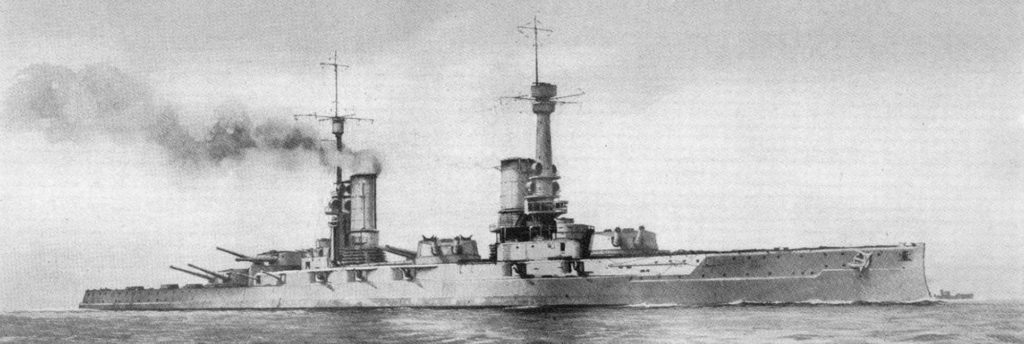
The five battleships (and not 4 as before, Kaiser, Friedrich der Grosse, Kaiserin, Konig Albert, Prinzregent Luitpold) which constituted this class marked a new milestone in the design of the German Battleships. They kept the same 12-in caliber (at that time lower than the one developed by Great Britain, the USA or even France), but the distribution in 5 axial turrets (instead of 6) was more rational, with two pieces in echelon at center, with a wide deflection that allowed them in principle to fire both side of the same side. This was on paper however, inferior to other fleets, three years late at least.
The second major advance was the adoption for the first time of turbines (already used in dreadnoughts in the Royal Navy since 1906). The range of the main guns was improved thanks to new mod.1909 mounts. After the Battle of Jutland, all but two of the 88 mm Flak batteries were removed from some ships (Their initial armament already included 4 AA guns on the aft deckhouse).
Armor protection was reinforced at the belt and CT. They differed in terms of machinery, having three Parsons turbines (built under license), AEG Vulcan or Schichau, but two turbines and a cruising diesel never finally installed on the SMS Luitpold. The latter had 14 boilers instead of 16 and reached 22 knots against 21 for the others. In sea trials the Kaisers managed to develop more than 55,000 hp and 23.4 knots.
In service in December 1912-December 1913, they made Vice Admiral Funke’s III squadron. They were not actually engaged before the Battle of Jutland in May 1916, fired a few volleys but received no hits. They did not have any opportunity to fight thereafter until sent to Scapa Flow after the armistice where they were scuttled on June 21, 1919.
Specifications
Displacement: 24,330 t – 27,400 t PC
Dimensions: 172.4 x 29 x 9.1 m
Propulsion: 3 shafts Parsons turbines, 16 Schulz-Thornycroft boilers, 31,000 hp. 21 knots
Armour protection: Belt 350, Battery 170, Internal Bulkheads 210, Turrets 300, CT 350, Barbettes 300 mm
Crew: 1300.
Armament: 12 x 305 (6×2), 14 x 150, 12 x 88 mm/4 AA, 5 x 500 mm TTs.
König class (1913-14)
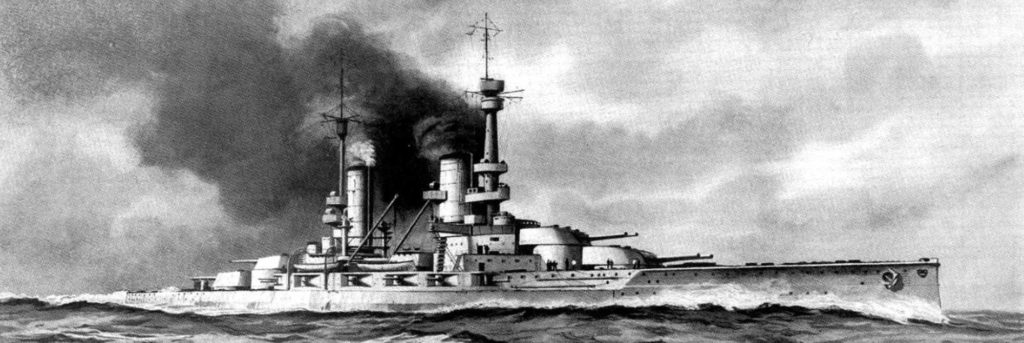
The 4 German battleships of the König class (King) (König, Grosser Kurfurst, Markgraf, Kronprinz) were an evolution of the previous design but their main innovation laid in the arrangement of their five turrets, one axial and the others superimposed aft and fore, which was done in other navies. This was similar in particular to the contemporary Orion standard (with King georges V and Iron Duke), and Bretagne class in France.
However, once again, the main artillery was criticized, still 12-in, even though the Queen Elisabeth class which much more devastating 15-in guns, was at the same time undergoing completion !
Once again, the excellence of protection and fire control was expected to make a difference. The gun mounts were of the new 1911 model which allowed a slightly higher increase of range, compensating for the lower caliber. Secondary artillery remained unchanged but the tertiary artillery lost two guns for four in barbettes, two on the deck of the forward deckhouse, and FLAK was privileged.
These guns were also removed in 1918. Machines were unchanged since the Kaiser, the Grosser Kurfürst having AEG-Vulcan turbines, Markgraf Bergmann turbines, and other Parsons turbines. These ships were accepted in service between September 1914 (Grosser Kurfürst) and February 1915 (Kronprinz). Kurfürst was the sixth unit of III Wing Rear Admiral Funke. The others replaced the units of four Wing Vice-Admiral Schmidt.
Kurfürst and Kronprinz were torpedoed by the submarine J-1 on November 5, 1916, but escaped. The same Kurfürst hit a mine in the Gulf of Riga on October 12, 1917 and the Markgraf on October 29, but she survived. All participated in the Battle of Jutland, König being the most damaged. After the war, these ships were interned at Scapa Flow and scuttled in June 1919. They were BU only in 1936 (Kurfürst), and 1962 for the other three. Divers in the meantime found some attraction there.
Specifications
Displacement: 25,390 t – 29,200 t Flak
Dimensions: 175.4 x 29.5 x 9.3 m
Propulsion: 3 shafts Parsons turbines, 15 Schulz-Thornycroft boilers, 31,000 hp. 21 knots.
Armour protection: Belt 350, Battery 170, Internal Bulkheads 210, Turrets 300, Blockhaus 350, Barbettes 300 mm
Crew: 1300.
Armament: 12 x 305 (6×2), 14 x 150, 10 x 88 mm/4 FLAK, 5 x 500 mm TT sub.
Bayern class (1916)
The Bayern class represented the peak of German WW1 battleships of the Dreadnought type. SMS Bayern and Baden, with their very modern designs, perfectly embodied the catching up the the Kaiserliches Marine of the Royal Navy. Responding to British Queen Elizabeth, they have equivalent artillery while being shorter of 15 meters but wider of 3 meters, the same displacement, and a slightly lower speed. Their fire control system, similar to that of the Hindenburg-class battle cruisers, was much more advanced.
Laid down at the beginning of 1914 under the Tirpitz plan, Bayern and Baden were launched in 1915 and entered into service at the end of 1916 and early 1917, too late to participate in major naval operations, including the Battle of Jutland. SMS Baden hit on a mine in the Gulf of Riga, regaining Kiel with great difficulty for repairs, and did not left the yard until 1921 to serve as a target. Bayern was interned at Scapa Flow, and was scuttled like the rest of the fleet on June 21, 1919. The following Sachsen and Württemberg were very close but were never completed. They were to be followed by the L20 Alpha class (unnamed) in 1917, equipped with massive 42 cm guns. They would remain paper dreams.
Specifications
Displacement: 28,070t, 31,700t PC
Dimensions: 180 x 30 x 8.50 m
Propulsion: 4 Parsons turbines, 14 Schultz-Thornycroft boilers, 48,000 hp. 21 knots
Armour protection: Barbettes 350 mm, Battery 170 mm, belt 350 mm
Crew: 1270
Armament: 8 x 380 mm (4×2), 16 x 150 mm in barbettes, 8 x AA 88 mm Flak, 5 x 600 mm TT sub

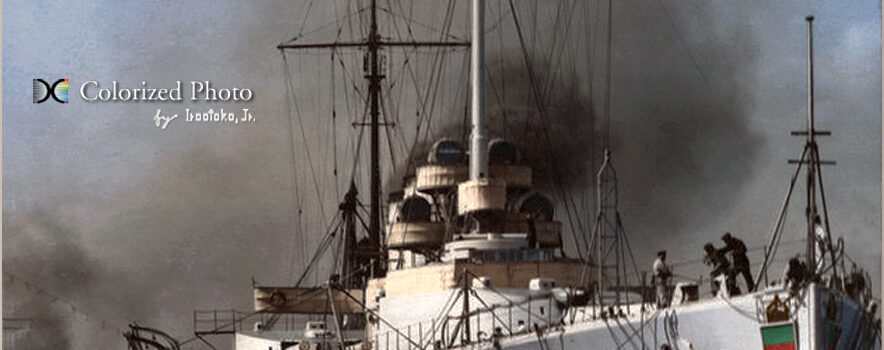

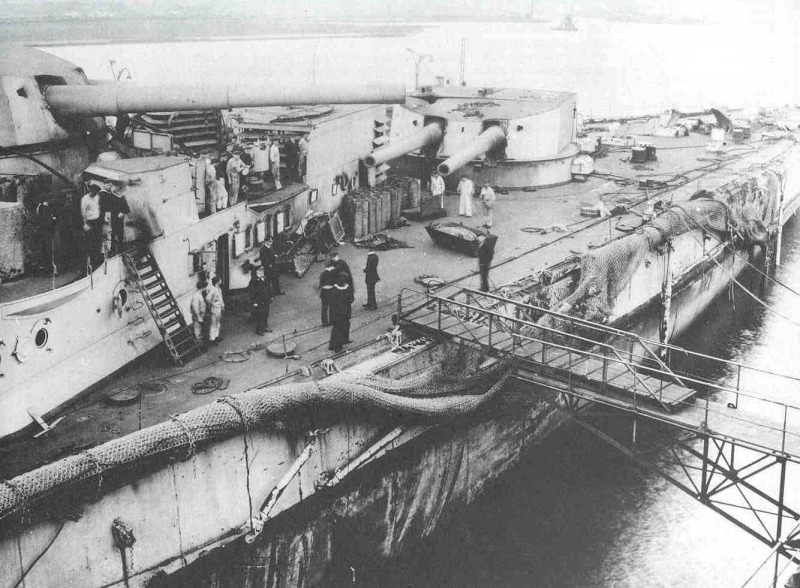
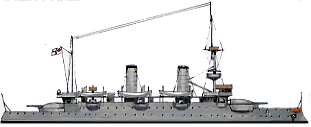
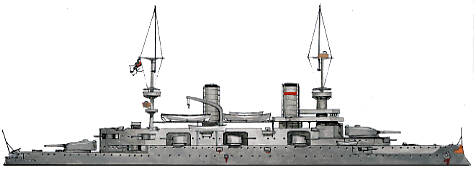
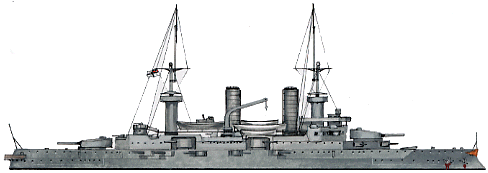
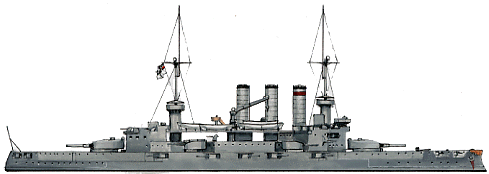
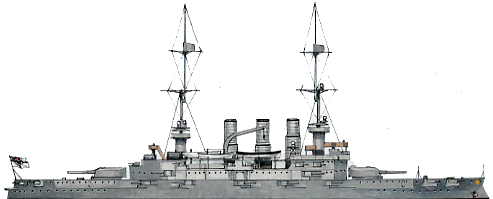




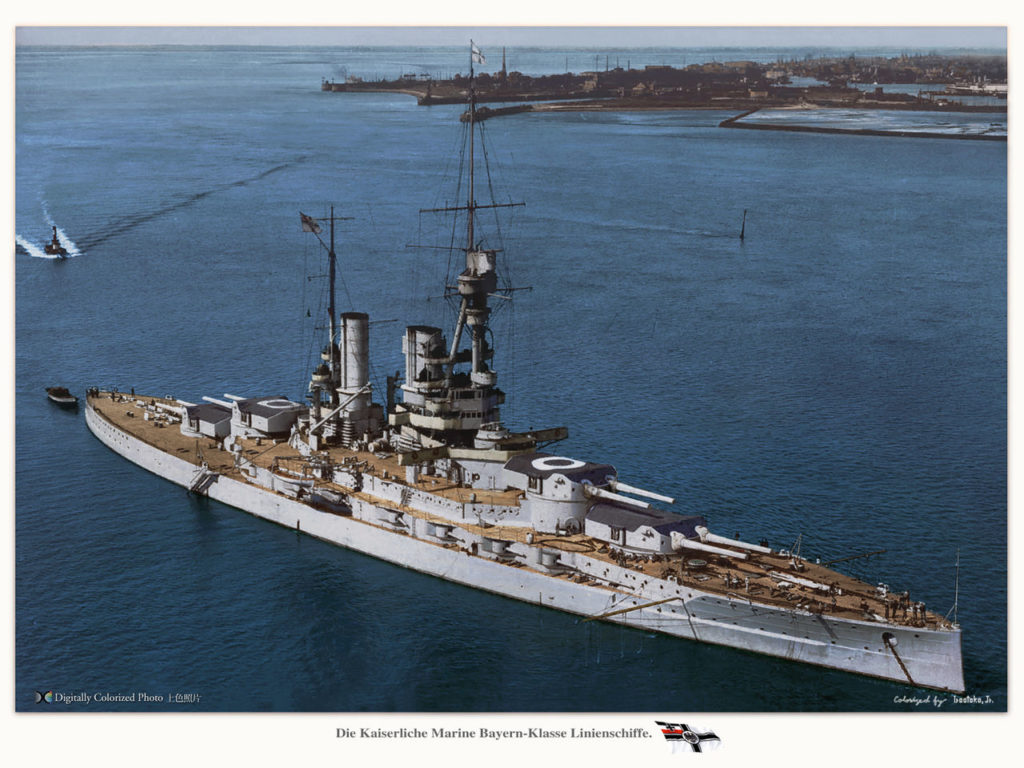

 Latest Facebook Entry -
Latest Facebook Entry -  X(Tweeter) Naval Encyclopedia's deck archive
X(Tweeter) Naval Encyclopedia's deck archive Instagram (@navalencyc)
Instagram (@navalencyc)





 French Navy
French Navy Royal Navy
Royal Navy Russian Navy
Russian Navy Armada Espanola
Armada Espanola Austrian Navy
Austrian Navy K.u.K. Kriegsmarine
K.u.K. Kriegsmarine Dansk Marine
Dansk Marine Nautiko Hellenon
Nautiko Hellenon Koninklije Marine 1870
Koninklije Marine 1870 Marinha do Brasil
Marinha do Brasil Osmanlı Donanması
Osmanlı Donanması Marina Do Peru
Marina Do Peru Marinha do Portugal
Marinha do Portugal Regia Marina 1870
Regia Marina 1870 Nihhon Kaigun 1870
Nihhon Kaigun 1870 Preußische Marine 1870
Preußische Marine 1870 Russkiy Flot 1870
Russkiy Flot 1870 Svenska marinen
Svenska marinen Søværnet
Søværnet Union Navy
Union Navy Confederate Navy
Confederate Navy Armada de Argentina
Armada de Argentina Imperial Chinese Navy
Imperial Chinese Navy Marinha do Portugal
Marinha do Portugal Mexico
Mexico Kaiserliche Marine
Kaiserliche Marine 1898 US Navy
1898 US Navy Sovietskiy Flot
Sovietskiy Flot Royal Canadian Navy
Royal Canadian Navy Royal Australian Navy
Royal Australian Navy RNZN Fleet
RNZN Fleet Chinese Navy 1937
Chinese Navy 1937 Kriegsmarine
Kriegsmarine Chilean Navy
Chilean Navy Danish Navy
Danish Navy Finnish Navy
Finnish Navy Hellenic Navy
Hellenic Navy Polish Navy
Polish Navy Romanian Navy
Romanian Navy Turkish Navy
Turkish Navy Royal Yugoslav Navy
Royal Yugoslav Navy Royal Thai Navy
Royal Thai Navy Minor Navies
Minor Navies Albania
Albania Austria
Austria Belgium
Belgium Columbia
Columbia Costa Rica
Costa Rica Cuba
Cuba Czechoslovakia
Czechoslovakia Dominican Republic
Dominican Republic Haiti
Haiti Hungary
Hungary Honduras
Honduras Estonia
Estonia Iceland
Iceland Eire
Eire Equador
Equador Iran
Iran Iraq
Iraq Latvia
Latvia Liberia
Liberia Lithuania
Lithuania Mandchukuo
Mandchukuo Morocco
Morocco Nicaragua
Nicaragua Persia
Persia San Salvador
San Salvador Sarawak
Sarawak Uruguay
Uruguay Venezuela
Venezuela Zanzibar
Zanzibar Warsaw Pact Navies
Warsaw Pact Navies Bulgaria
Bulgaria Hungary
Hungary

 Bundesmarine
Bundesmarine Dutch Navy
Dutch Navy Hellenic Navy
Hellenic Navy Marina Militare
Marina Militare Yugoslav Navy
Yugoslav Navy Chinese Navy
Chinese Navy Indian Navy
Indian Navy Indonesian Navy
Indonesian Navy JMSDF
JMSDF North Korean Navy
North Korean Navy Pakistani Navy
Pakistani Navy Philippines Navy
Philippines Navy ROKN
ROKN Rep. of Singapore Navy
Rep. of Singapore Navy Taiwanese Navy
Taiwanese Navy IDF Navy
IDF Navy Saudi Navy
Saudi Navy Royal New Zealand Navy
Royal New Zealand Navy Egyptian Navy
Egyptian Navy South African Navy
South African Navy






























 Ukrainian Navy
Ukrainian Navy dbodesign
dbodesign
I have seen some plans for a 16.25″ or 16.5″ armament for post 1920 german ships. but cannot find any sources for these. can you help?
No so for the 16.25 but certainly the 16.5 in in Conway’s and other references, it’s called the class 20 Alpha. Look at the end of the first column in this article (on desktop). Is it possible to publish one of these sketches anyway ?
David
Hi Harcourt, check for these on navweaps.org, it’s the best source online i know about naval weaponry
and sorry for the late answer…
Best !
The picture stated to be of L20e alpha is actually a drawing of Ersatz Yorck, given the bridge structure, and overall appearance.
Hi Aelvir, That’s the case. I Just replaced it with the right one as soon as i found it out. I’ll do a HD reconstitution when starting to tackle paper projects next year…
Thx for spotting anyway !